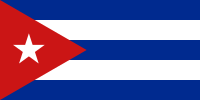Pedro de la Hoz writes today at La Haine[es] discussing the limitations and achievements of race-egalitarian policies in Cuba. The article, titled Afro-descent and inclusion in the Cuban Revolution, puts together known criticisms with less known and quite striking data.
We assumed that equality was complete since the implementation of egalitarian criteria. So we arrived to the 21st century carrying with us the deficit of visibility of the problems derived from the racial problematic.
He complains that it is very difficult to appreciate because the data is hidden and not easily available but where he has found clear racial data, it is very positive.
For example, in the scientific center of La Habana (Havana) 37% of the specialists are Black or Mestizo (mixed race, normally mulatto). This is a figure that agrees well with the official race statistics, which state that 10% declare themselves Black and 25% Mestizo.
Even more outstanding is the apportion of Black and Mestizo people registered in the Henry Reeve Contingent, which sends physicians and paramedics around the World as a form of solidarity, here the Black and Mestizo group adds up to 49.1% (maybe because this ethnic group is more motivated towards active solidarity?)
While these figures are obviously incomplete, they underline yet another difference between Cuba and their big neighbor by the North, the USA, where Black People, as well as Hispanics, are not proportionally represented (not at even remotely so) in their scientific and academic community. In some cases US Afroamericans are being educated in the Large Island (as physicians) because they lack equal opportunities of education in their motherland.
In the USA it is smaller minorities (Jews, East Asians, South Asians) who are over-represented in the academic circles. Why? I'd say that it is because of the costs and responsibilities involved in "free market" university education, which require saving closely knit families, something that Blacks and Latinos typically lack of because of historical marginalization and poverty, while these smaller successful minorities build their success around their particularly strong family cores.
Anyhow, all these real but not so apparent achievements do not mean that criticisms are not necessary, in the opinion of de la Hoz. For example he mentions that the presence of Black People in Cuban media is stereotypical:
Our television does not hide the Black People and their universe, it trivializes them.
And it is quite obvious that the ministers and politburo members are mostly white, well above the statistical apportion of 65%. Full integration is indeed far from real.

No comments:
Post a Comment
Please, be reasonably respectful when making comments. I do not tolerate in particular sexism, racism nor homophobia. The author reserves the right to delete any abusive comment.
Comment moderation before publishing is... ON